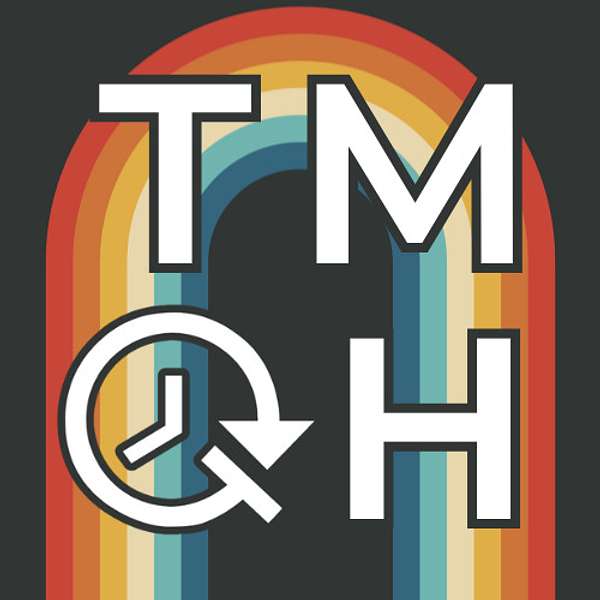
This Month in Queer History
Sharing LGBTQ history that is accessible and entertaining!
This Month in Queer History
TMQH: Transgender Day of Visibility
For Transgender Day of Visibility, This Month in Queer History is taking you back in time to 2009, when TDOV was founded. In this episode of TMQH, we explore the history of the holiday and why it's so meaningful to trans people around the globe. Thank you for tuning in to our first episode!
Show Notes/ Further Reading:
https://docs.google.com/document/d/1Exk9_d5l0jUNEFrNIqvTQVp_nZ-pbpNHg2j2cR5TDs8/edit?usp=sharing
Follow CAMP Rehoboth:
fb.com/camprehobothcommunitycenter
camprehoboth.org
instagram.com/camprehoboth
Hi, and welcome to This Month in Queer History. In this episode, we’ll be discussing the holiday Transgender Day of Visibility, celebrated every year on March 31st. Today, March 31st, 2024, is the 15th anniversary of the first TDOV, created in 2009 by Rachel Crandall-Crocker, a transgender activist and the executive director of Transgender Michigan. Speaking on its creation, she recalled feeling that a holiday to celebrate transgender and gender non-conforming people was needed. At the time, the queer community observed Transgender Day of Remembrance in November, which memorialized transgender people lost to transphobic violence, but there wasn’t a holiday that centered trans pride and trans joy. Crandall-Crocker proposed the idea for TDOV on Facebook, and it spread like wildfire through the trans community. She then reached out to other trans advocates for support, and the first TDOV event was held that year in Royal Oak, Michigan.
The response from the international trans community was immediate – that first year, it was also celebrated in England and Canada, and within the next 5 years, it was celebrated in countries across Europe, Asia, Africa, Oceania, and the Americas. It inspired protests in Ireland and Russia, as well as festivals in Long Beach and San Francisco in California. It is celebrated by national US LGBTQ rights organizations like the Human Rights Campaign, Parents & Friends of Lesbians and Gays (PFLAG), the Gay, Lesbian & Straight Education Network (GLSEN), and Trans Student Educational Resources (TSER), along with local organizations like CAMP Rehoboth.
In 2021, President Biden became the first US president to officially acknowledge TDOV by putting out a proclamation recognizing the struggles of transgender people in the US and encouraging cisgender US Americans to be better allies to trans people and support increased civil rights and protections for trans people. He put out similar proclamations in 2022 and 2023 reaffirming the previous proclamations.
Today, TDOV is celebrated across the world as a way to shine a light on the courage, beauty, and resilience of the transgender community. People celebrate in a variety of ways, from protests to panels to posting selfies. For those involved in activism, it is a chance to assess the gains of the last year and set forth goals for the future. And for many transgender people, it is a time to reflect on what visibility means for them. For some, visibility is about representation – seeing themselves portrayed in media by trans actors, reversing the impact of harmful stereotypes from old media, and making their voice heard through publications and social media. Another facet of visibility is safety, a huge concern given the rates of transphobic violence. For some people, the safest way to be is to “pass” as their chosen gender, in places and situations where being visibly transgender is dangerous. Black and brown trans women of color are often not given a choice about whether to be visible – the force of transphobia, misogyny, and racism in combination, also known as transmisogynoir, means that many are hypervisible, and therefore acutely vulnerable. Part of the fight for visibility is ensuring that transgender people are able to choose when to be visible, and creating a world in which that choice isn’t a matter of life and death, as it so often is for the most marginalized in our community. In order to create that world, trans people need to be more than just visible. We need trans people and allies taking part in politics and community organizing for trans rights. Visibility won’t do much good if trans people and our allies are still barred from creating policy that increases transgender access to resources, ensures healthcare and social safety, and creates systems of redress for victims of violence. For those of us in the transgender community, the support of allies means the world – we must work together to create a better world for people of all genders.
I hope you’ll join me today in celebrating the 15th annual International Transgender Day of Visibility. Whether you, like me, are transgender, and you’re celebrating your selfhood, pride, and perseverance today, or you’re an ally, showing love and support to trans people in your life, or even someone who is for the first time recognizing themselves in the trans people they see and hear today. Whoever you are, enjoy this day and celebrate the diversity of gender expression across humanity and across the world. As the saying goes, we are everywhere.
Thank you for joining us for the first episode of This Month in Queer History. Take care, and join us next month for another short-form episode about LGBTQ history with a focus on the United States and the 20th century.